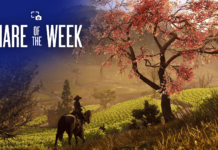Meet the Medal-Winners in SA’s Wildlife Olympics
In an exciting and unique event that has captured the attention of many across the globe, South Australia recently hosted its very own "Wildlife Olympics." This extraordinary initiative has become the most trending topic on Google today, captivating animal enthusiasts and casual viewers alike.
For more detailed information, you can refer to this news link.
A Celebration of Nature’s Athletes
The Wildlife Olympics is an innovative concept designed to celebrate the incredible physical abilities and unique adaptations of the animal kingdom. South Australia, renowned for its rich biodiversity and commitment to conservation, provided the perfect backdrop for this event. From the swift cheetahs to the tireless migratory birds, the event showcased an array of species that excel in various ‘sporting’ disciplines.
The Athletes and Their Feats
Here are some of the standout performers who won medals in their respective categories:
- Speedster Supreme: The Peregrine Falcon
The Peregrine Falcon clinched the gold in the “speed” category. Known for its breathtaking diving speed, the falcon can reach over 240 miles per hour (386 km/h) while hunting. This makes it the fastest bird, and indeed the fastest animal on the planet. - Long-Distance Swimmer: The Southern Bluefin Tuna
In the aquatic category, the Southern Bluefin Tuna took the top spot. These remarkable fish are known for their incredible endurance, capable of migrating thousands of miles across the ocean to find suitable breeding grounds. - Master of Strength: The Dung Beetle
The mighty Dung Beetle won the strength category. Despite its small size, this insect can move objects 1,141 times its own body weight. To put it in perspective, that’s akin to a human moving six double-decker buses! - Aerial Acrobat: The Australian Swallow
Highlighting agility and acrobatics, the Australian Swallow was awarded gold for its incredible aerial displays. These birds can execute rapid twists and turns with unmatched precision while catching insects mid-flight.The Purpose Behind the Event
The Wildlife Olympics isn’t just about showcasing the physical prowess of animals; it also has a significant educational and conservation-focused aim. The event seeks to raise awareness about the incredible biodiversity found in South Australia and the importance of preserving these natural wonders for future generations. By highlighting the extraordinary abilities of these animals, organizers hope to foster a greater appreciation for wildlife and the natural world.
Reactions and Reviews
The event has garnered positive reactions from various quarters. Environmentalists and wildlife enthusiasts have praised the initiative for its innovative approach to conservation education. "It’s a fantastic way to engage the public with wildlife conservation," said Dr. Samantha Gray, a renowned wildlife biologist. "By celebrating these animals’ unique abilities, we can foster a deeper connection and commitment to preserving their habitats."
Social media platforms have been abuzz with reactions as well. Twitter user @WildlifeFanatic exclaimed, "Absolutely loving the Wildlife Olympics! Such a creative way to appreciate our animal friends! #WildlifeOlympics"
More Than Just a Spectacle
While the event is undoubtedly entertaining, it serves a deeper purpose. By anthropomorphizing the abilities of these animals and presenting them in a familiar context, the Wildlife Olympics helps bridge the gap between human and animal worlds. This connection can be pivotal in cultivating a sense of responsibility towards wildlife conservation.
Additional Information
Here are some more interesting facts about the event and its participants:
- The Role of Technology: Advanced drone technology and high-speed cameras were used to capture the animals’ performances, providing stunning visuals that showcased their abilities in a way never seen before.
- Educational Outreach: Alongside the main event, there were numerous educational workshops and interactive sessions for children and adults. These sessions aimed to teach the importance of biodiversity and the steps that individuals can take to contribute to conservation efforts.
- Community Involvement: Local communities were actively involved in the event, with many schools and organizations participating in related activities and projects. This grassroots involvement is crucial for building a sustainable conservation movement.
Looking to the Future
The success of the Wildlife Olympics has prompted discussions about making it an annual event. There are also plans to expand the concept to other regions, highlighting different species and ecosystems. This could help raise awareness on a global scale and promote international cooperation in wildlife conservation.
Conclusion
The Wildlife Olympics in South Australia has not only captivated audiences worldwide but also highlighted the incredible diversity and adaptability of our planet’s fauna. By celebrating these natural athletes, the event has successfully combined entertainment with education and conservation. It stands as a testament to what can be achieved when creativity meets a genuine commitment to preserving the natural world.
For more detailed information, you can refer to this news link.
As this news continues to trend on Google, it serves as a reminder of the power of innovative ideas in promoting significant causes. Whether you’re an animal lover, a conservationist, or just someone who enjoys a good story, the Wildlife Olympics offers something for everyone.


































